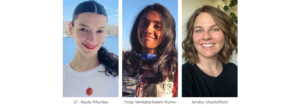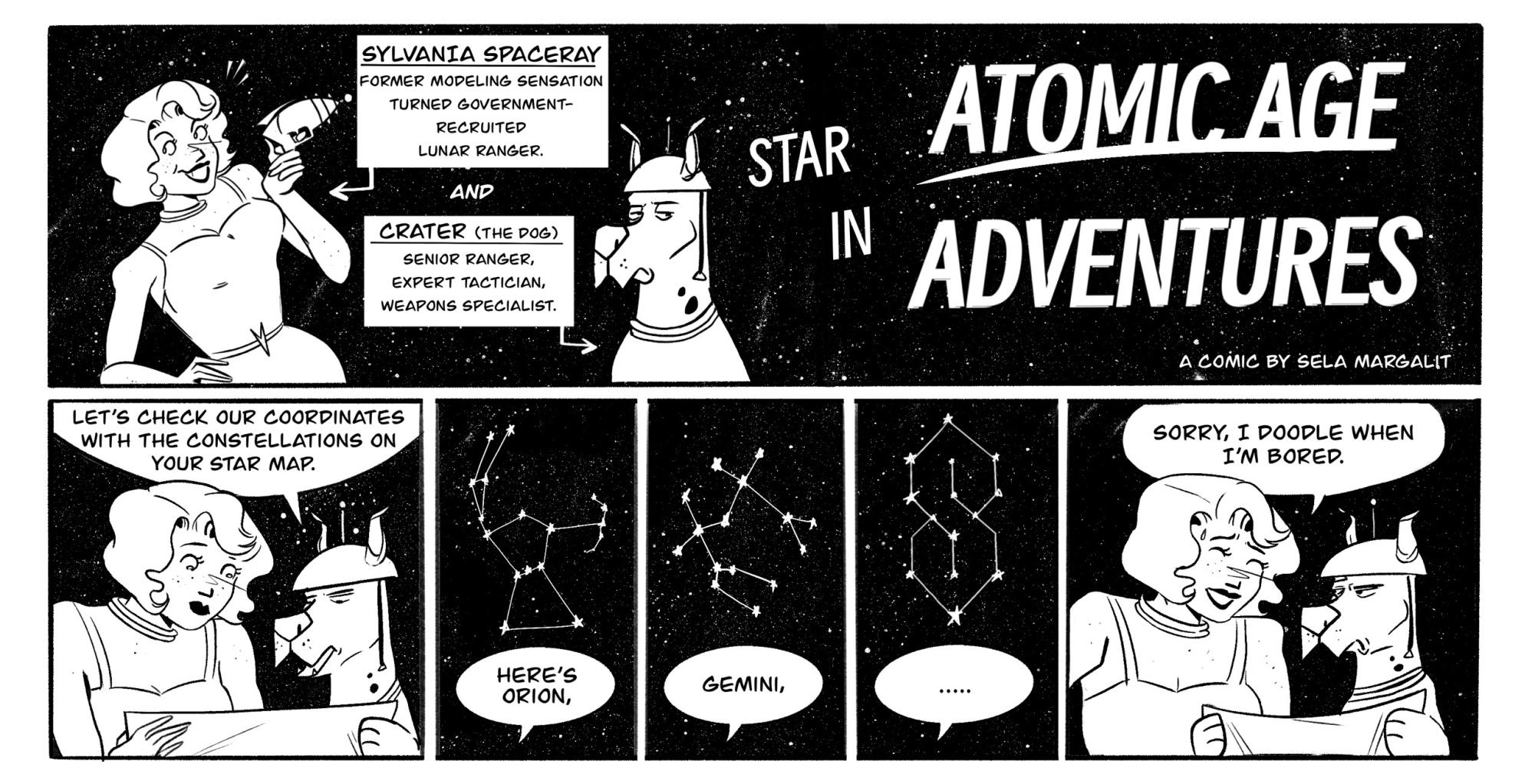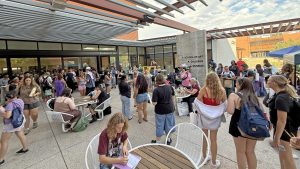
Making a difference: Meet the School of Art’s 3 new faculty members
By Michael Chesnick. October 7, 2024Dr. Ilayda Altuntas, Pooja Venkatachalam Kumar and Jandey Shackelford grew up in Turkey, India and Wyoming, respectively. The new School of Art faculty members may come from different backgrounds, but they share one common goal: to encourage students to push their creative and scholarly boundaries.
In August, the school welcomed Altuntas, assistant professor in Art and Visual Culture Education; Kumar, assistant professor of practice in Illustration, Design and Animation; and Shackelford, an MFA alumna and visiting professor in 2D Studies and Printmaking.
Altuntas specializes in sound pedagogy and the intersection of visual art and culture. She received her Ph.D. in Art Education from Pennsylvania State University in 2021. Her dissertation, “Pedagogy of Sounding: Tuning in Art Education,” examines curriculum and methodologies around sound art and auditory perception. Altuntas has extensive teaching experience, including five years at the K-12 level. She came to the School of Art from Indiana University Bloomington, where she was a clinical assistant professor. She also was a graduate teacher at Penn State and a visiting assistant professor at Texas State University.
Kumar specializes in speculative design, augmented reality, coding, illustration and branding — while finding ways to represent complex science in fun, approachable and attractive ways. She completed her MFA from Maryland Institute College of Art in May 2024 and has an undergraduate degree in Chemical Engineering from the SVU College of Engineering in Tirupati, India.
Shackelford earned her Master of Fine Arts from the U of A School of Art in 2023. She received her BFA with minors in Museum Studies and Art History from the University of Wyoming. During her undergraduate studies, she also had the opportunity to study abroad in Adelaide, Australia, for a year.
The three recently reflected on joining the School of Art:
Q. How did you get interested in art, art education and teaching?
Altuntas: I grew up in Istanbul, Turkey, and my education was influenced by the German ecole concept, which emphasized critical thinking, intellectual rigor and multilingualism. When I pursued higher education, Turkey’s fine arts universities followed a constructivist approach to art, focusing on structure, form, and technical skill. After I received my BFA, I volunteered as a teacher in Springfield Public Schools at a Title I elementary school in Massachusetts, which deepened my understanding of how art education can shape the lives of youth. This led me to pursue a master’s degree at Pratt Institute, where I also volunteered in juvenile detention centers in New York City. In these challenging circumstances, I witnessed firsthand how art could be a tool for expression and healing. This experience drove me to explore new methods of thinking about the role of the arta, particularly through sound, in environments where conventional approaches may not resonate. These experiences eventually led me to develop new ways of integrating sound, memory, and identity into art education, which became the focus of my research, teaching and artmaking.

Kumar: I grew up in Tirupati, South India, where my love for art began. Despite societal pressures to pursue a more conventional path, I initially studied chemical engineering. The pandemic allowed me to reconnect with my passion, using art to support social causes. This led me to pivot towards art and design, ultimately pursuing an MFA in Illustration at MICA. My journey has been one of embracing creativity and advocating for meaningful change through art.
Shackelford: I was born and raised in Gillette, Wyoming, where my passion for art began early. By the age of 8, I was inspired to become an art teacher. As a first-generation college student, I started my higher education journey at a community college, earning an Associate of Fine Arts. I then transferred to the University of Wyoming, where I completed a Bachelor of Fine Arts with minors in Museum Studies and Art History.
Q. Describe your teaching philosophy and how you motivate students.
Altuntas: I want to create a space where students feel supported and can do their best work. For instance, I know that not every student has access to the materials they need at home, so if someone can’t finish a project outside of class, I make sure they have time during school to work with the art supplies available. … Since I also work with future art educators, it’s important that they carry this practice forward to the young learners they will teach. … I focus on the process over the final product. If a student is experimenting or taking risks, I encourage that, even if the results aren’t perfect. It’s more about growth and learning through the experience. … Ultimately, I motivate students by connecting the work we do in class to their lives, whether through discussions or hands-on projects. When students feel their work matters and they’re supported, they’re more engaged and confident in their creative journey.
Kumar: I believe in nurturing curiosity and providing a supportive environment where students feel empowered to express themselves. I integrate various mediums and collaborative projects, fostering a dynamic learning experience that emphasizes both personal growth and community impact.

Shackelford: My teaching philosophy centers on a creative and collaborative process. I believe that education in the arts is most effective when it fosters an open dialogue between teachers and students. By drawing on my interdisciplinary background, I aim to engage students in diverse conversations about materials, methods, and the broader political and cultural implications of their work. I create an environment where exploration and experimentation are encouraged.
Q. As an artist or teacher, what’s a favorite memory and/or proudest achievement?
Altuntas: One of my favorite memories as a teacher was during a soundwalk workshop I held with students. We wandered around campus, visiting places like the arboretum and amphitheater, just listening and recording what we heard. It was remarkable to see how each student connected with the environment in their own way. … What I’m most proud of is seeing the lasting impact I’ve had on students. It’s those moments when a student realizes their own potential, takes ownership of their creative journey, and starts seeing the world or their work differently. … I’ve had students return later and share how something from our class influenced their path forward. Those moments are the most rewarding.
Kumar: One of my favorite memories is collaborating with Kalam Shastra, a collective of women artisans, to preserve the traditional Kalamkari art form. It was fulfilling to see design theories come to life in a way that supported both heritage and innovation. My proudest achievement is transitioning from engineering to art, gaining recognition on platforms like Communication Arts, and having my work exhibited in New York.
Shackelford: One of my proudest achievements is having a solo exhibition in Santa Fe, New Mexico. During this exhibition, some of my works were acquired for permanent collections at Santa Fe Community College and Christus St. Vincent Regional Medical Center.

Q. What career advice do you have for students as they start or continue their college journey?
Altuntas: My advice is to embrace this time as a period of exploration. Experiment with ideas, challenge yourself, and take creative risks without the pressure of perfection. Failure is part of the process, and it’s where some of the best growth happens. Don’t be afraid to push yourself out of your comfort zone—whether that’s trying a new technique, collaborating with others, or even asking tough questions. When I was an undergrad, the studio and school became my home. It was a safe space where I could immerse myself in my work, connect with peers, and engage in conversations about our projects. I encourage you to knock on professors’ doors, ask questions, and don’t be afraid to sit down with them to discuss your ideas. … And take advantage of the local art scene, immerse yourself in the environment, and seek out meaningful connections within the community. Engaging with local artists and attending events can help you build relationships that will shape your artistic path.
Kumar: Be fearless in exploring different disciplines and seek out opportunities that challenge you. Collaboration and community engagement are invaluable in building a meaningful career. Never underestimate the power of mentorship—actively seek guidance and be open to learning from diverse perspectives. Stay true to your passion and let it guide you, even if the path seems unconventional.
Shackelford: Drink lots of water and go to as many art events as you can!







